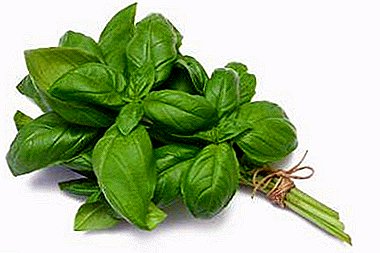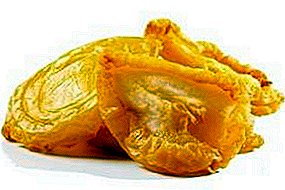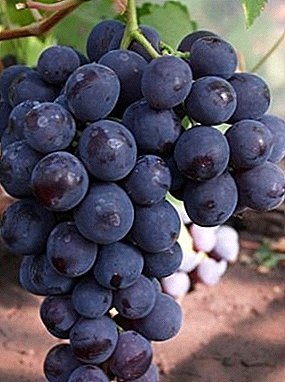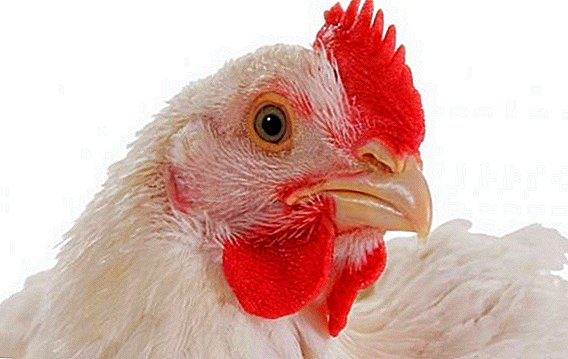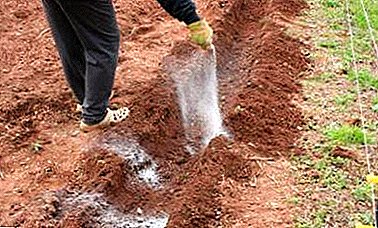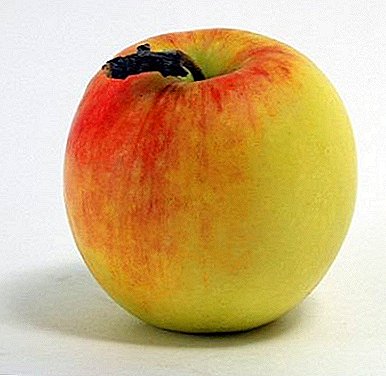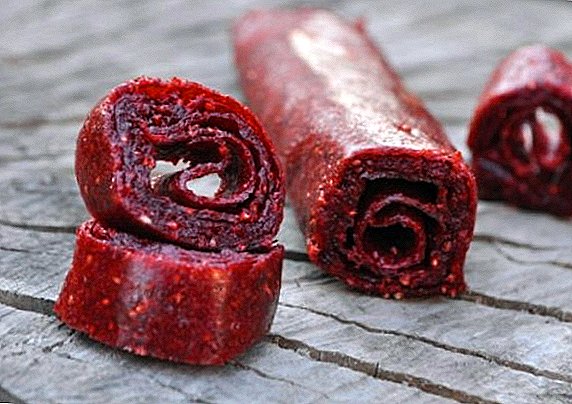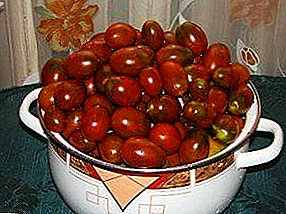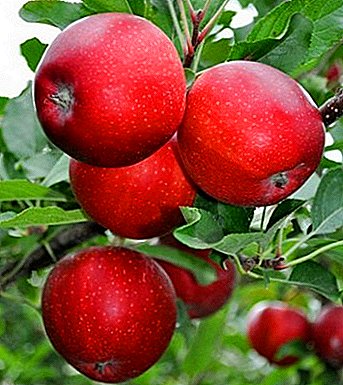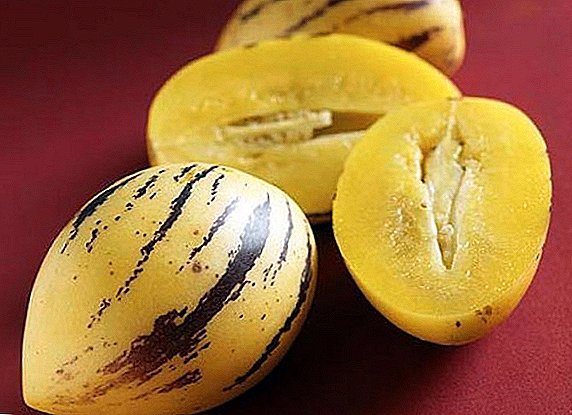 The fruits of the Pepino plant, a perennial green shrub native to the South American continent, resemble a cucumber or melon pear in shape, and to taste - sweet juicy melon.
The fruits of the Pepino plant, a perennial green shrub native to the South American continent, resemble a cucumber or melon pear in shape, and to taste - sweet juicy melon.
Now it is quite possible to grow an unusual melon pear on a home window sill. Enough to know how to care for unusual exotic in home breeding.
Pepino: a description of a melon pear
At home, you can grow a fruitful shrub. On the branches of the plant ripen pear-shaped fruits. In greenhouse conditions, perennial reaches 1 m in height. Leaves grow large, acquire oval contours. Their length is about 15 cm. 
The plant itself is a lignified perennial up to a meter high.. Despite the pronounced fruity taste of the fruit, this plant is from the family of Solanaceae, to which belong peppers, eggplants and tomatoes.
Therefore, the leaves are similar to large oval pepper leaves, inflorescences - on the small color of potatoes (about 20 pieces on one branch). To taste, the fruits have absorbed all the sweetness of a ripe melon with a banana note in the aroma.
Did you know? 93% of ripe pepine fruits are water. The rest is beneficial carbohydrates. Therefore, nutritionists recommend this fruit to people who have problems with excess weight.
In the process of ripening, the fruits acquire yellow or cream peel, decorated with longitudinal lilac, brown, gray or green stripes. The average fruit of homemade pepino in a pot varies in weight from 200 to 700 g.
The cut fruit has honey-yellow or brown flesh with a pink sheen. Melon pear has unprecedented juiciness. The botanically forming fruits are real berries.
Two varieties are most common in our area: "Ramses" and "Consuelo".
The first has the following properties:
- excellent resistance to external factors;
- good fruitfulness;
- early ripening of pear-shaped fruits of yellow-orange color with a peppery shade.
Consuelo has a more approximate taste for melon. Bright yellow pears grow with lilac stripes. But this variety does not withstand changes in temperature and humidity. Both varieties are adapted for growing indoors. 
When the fruits ripen, they become yellow or cream, have longitudinal purple, brown, gray or green stripes. Fruit weight - from 200 to 700 g. Honey-yellow or pinkish-brown flesh is very juicy, has a delicate sweet-sour taste.
Solanaceae is a storehouse of vitamins C, B1, PP, carotene, iron, pectin. Before eating fruits, it is desirable to clean the outer skin.
Necessary conditions for growing pepino in the house
Breeders count about 25 varieties of this plant. For growing on a home window sill you need to create optimal conditions for the growth and development of pepino:
- provide a high level of humidity;
- monitor the moderation of temperature at different times of the day.
Growing this unusual fruit can turn into a real experiment. The plant is much better fruit in a cool environment. But at the same time there is a risk that the fruits will not ripen and lose weight.
It will be useful for you to learn how to properly grow and care for pepino at home.
Lighting for growing pepino in a pot
In pepino, after a week or two, when grown at home, roots appear from seeds. At this time, a vessel with planting material is placed under the usual light bulb for around-the-clock lighting before the formation of cotyledons.
A month later, the light feed is gradually reduced to 14 hours a day. Closer to the beginning of spring, the plant is transferred to the usual light regime of the day, without the use of lighting devices.
Air humidity and temperature
The most optimal humidity conditions for upset stepchildren are up to 90%. This indicator can be provided in a greenhouse or in a pot under a film, glass or plastic cap.
It is very useful to carry out room ventilation. This will not only contribute to better pollination of the growing bush, but will save plants from disease.
Soil requirements
"Melon cucumbers" prefer a light fertile soil with a neutral level of acidity. Choose a light, moisture and breathable substrate without an excess of nitrogen for planting seedlings in home pots.
Experts recommend treating the soil with a fungicide before the picking procedure.
How to plant pepino at home
In our climate zone it does not always come out to get high quality seeds.. Often they are immature. Experienced gardeners say that pepino, when grown from seeds, bears fruit later than sprouts from cuttings at home. If the cuttings are planted at the end of winter, then at the end of summer you can get the first ripe pears with melon flavor.
At home, you can also grow plants such as mushrooms, savory, lemon, oregano, lemon balm, jasmine, mandarin, parsley, cardamom, ginger.
Planting pepino seeds
Seeds are sown at the end of the autumn season. Then, before the first spring heat, the sprout is already strong and will be ready for the ovary of the first fruits. Seeds germinate poorly in the ground. For germination, it is better to put them on wet toilet paper or tobacco paper, which has the best water-holding properties.
Planting material on a paper sheet is placed in a shallow ceramic or plastic container to avoid the rapid evaporation of moisture. For germination use Petri dishes or small dishes with lids. Instead of paper, you can use cosmetic cotton pads. 
The vessel is covered with a usual transparent film or package. Ceramic bowl covered with glass. Then it is put in a dark place until the first shoots. Paper or equivalent moistened with water every three days. As soon as the first seeds are hatched, it is possible to transfer the container to a bright place (the temperature mode is not lower than + 24 ... +26 ° C. The seedlings dive only after the cotyledons are fully opened. 
Experienced gardeners know the secrets of how to grow a fruitful pepino shrub from seeds extracted from a mature fruit. It is important to ensure that the "pear" is not torn off in its immature form - there remains a risk that the seeds will not sprout. In order to avoid such a risk, it is better to purchase ready-made planting material at a garden store. When buying, they prefer seeds of the correct round shape and light shades of the structure.
Pepino cutting
Vegetative reproduction of pepino gained its popularity due to more intensive growth of young shoots. Breeding seedlings pepino causes a lot of difficulties. It is much easier to root stepchildren. 
"Kids" on the third day let out little roots. Pyschopes from the uterine pepino rooted in peat soil in February. Monthly seedlings stalls store all identifying traits of a particular variety. They bloom and bear fruit, ahead of time seedlings of seeds.
At the end of February, the stepsons are carefully separated and planted in light ground. You should immediately prepare yourself for the fact that the melon bush of pepino melon pear will grow slowly even with all the rules of cultivation.
How to care for homemade pepino
Placed pots with light-loving bushes on the window sills of the southern windows of an apartment or house. Beware of abundant watering. It is important to maintain the desired temperature during the day and at night. When supercooling, the plant can shed its ovaries of future pear-shaped fruits.
Important! To maximize pollinating flowering shrubs gently shaken. Bees will take care of this in the open air when landing at their summer cottage.
The plant develops especially large inflorescences. From time to time, they may break without sustaining their own weight. It should be time to tie the buds of pepino to the upstream node of the stem in the pot - this is one of the key procedures in the care.
Watering pepino
Water the bushes as the topsoil dries. To reduce the number of waterings and protection from weeds, the soil at the base of the stem is mulched with rotted sawdust. Pepino likes moderate watering even at home.
How to fertilize melon pear
Under digging make previously harvested rotted mullein (1:10) and mineral fertilizers. 7 days after the disembarkation of the bushes, the above-ground part of the plant is fed with a solution rich in microelements:
7 days after the disembarkation of the bushes, the above-ground part of the plant is fed with a solution rich in microelements:
- "Appin";
- "Zircon";
- "Symbiont".
Pepino bush formation
For the formation of a beautiful crown adhere to the following rules:
- With a strong growth of bushes, their basis is tied to wooden or plastic supports.
- A strongly flowering plant requires periodic removal of the "stepsons". If this is not done, the fruits will be formed with some delay.
- For giving to a magnificent crone accuracy use a cutting. The best option for trimming a bush is to fit it under the shape of a tree.

Did you know? Every inhabitant of the East knows what pepino is and how to grow it at home. For modern Japanese, the fruit of pear-shaped berries is a favorite present. It is usually wrapped in paper and laid in a gift box tied with a ribbon.
For an adult petain bush, the loss of several mature leaves will not cause damage, but on the contrary - will contribute to a good insolation. Interestingly, New Zealand, Australian and Californian scientists derive new varieties of this berry in modern laboratory conditions. This helps them learn better how to grow attractive pepino fruit for supply to other countries.
The main diseases and pests in the pot pepino
Domestic breeders until this time did not derive a complete classification of pests and diseases for this rare plant. In many countries, pepino remains a mystery to the local population: many residents do not even know what it is.
Our summer residents have identified certain types of pests that affect uterine specimens in the winter:
- spider mite;
- whitefly;
- Aphid green peach or melon.
Important! Experts have noticed the increased vulnerability of the above species to the optimal consumption rates of drugs for the treatment of other solanaceous crops. Process one stalk with the selected solution to avoid plant intoxication.
Compatible in composition means you can prepare a universal solution for the destruction of the above pests. It is important to schedule such a procedure before moving the potted bushes into the room. The preparations have a not very pleasant smell, which is preserved for a long time on the branches and stem of the bush and the top layer of soil. 
Optimal analogue - fitootvary or infusions based on marigolds, yarrow, tobacco, tobacco, onion peel, garlic. Natural home remedies for the destruction of pests harvest in the summer. Spray the plants at intervals of 5-7 days.
The greatest danger to planted specimens in home pots is the defeat of the black leg. It occurs due to improper watering. Overmoistened soil is a favorite medium for bacteria that cause rotting of the root system of flowerpots and ornamental crops. Also homemade Solanum muricatum suffer from fungal phytophthora.
Plantings in pots are influenced by certain viruses characteristic of melon pears and other types of nightshade. In rare cases, leaves are affected by bronze bloom. In addition to the harm done to the green part, the virus does not allow pepino to develop its fruit normally. It is important to neutralize the infected shrub in time during the cultivation of pepino so that other neighboring plants are not infected at home.
Harvesting homemade pepino
The fruits ripen in a two-month period after the formation of inflorescences. Ripening, they acquire softness. Immature "melon berries" dope in a bright room at room temperature and even on the shelf of the refrigerator.
Ripe fruits have amazing tonic and refreshing properties, quickly quench thirst. If you are late in harvesting pepino, you will surely find out what kind of cunning plant it is. Overripe berries will not please you with the expected aroma and completely lose their taste.
Important! Even if ripe “pears” are cracked, they can not rot for a long time.Melon pear is introduced into the diet as a separate fruit or as an ingredient for salads. It is frozen, dried and preserved. Prepare excellent candied fruits and jams. The optimal thermal regime for storing fresh fruits is from +4 to +5 degrees for six to ten weeks, taking into account the characteristics of a particular variety.
In autumn, a shrub with unripe berries should be transplanted into a larger pot and grown in a greenhouse for additional harvesting from November to the New Year. Pepino without fail provide conditions of rest if the bush has otklodonosil. The stem with the crown of the plant is cut into three quarters and placed in a dark, cool and well-ventilated room for 2 months. The optimal temperature indicator at the same time is + 5 ... + 10 degrees. It is important to prevent excessive air dryness. After a period of time, homemade pear-shaped melons are transplanted into pots with loose soil.
Following these tips, you can easily grow an exotic fruit yourself and please yourself and loved ones with the unexpected taste of its juicy flesh, even in harsh winter.


